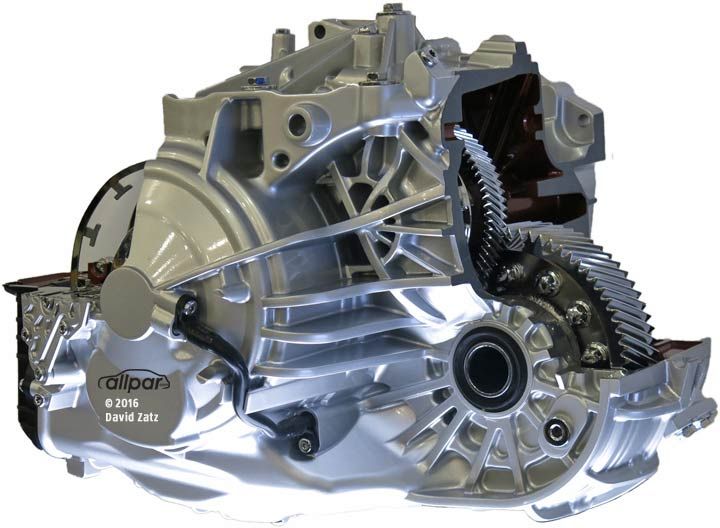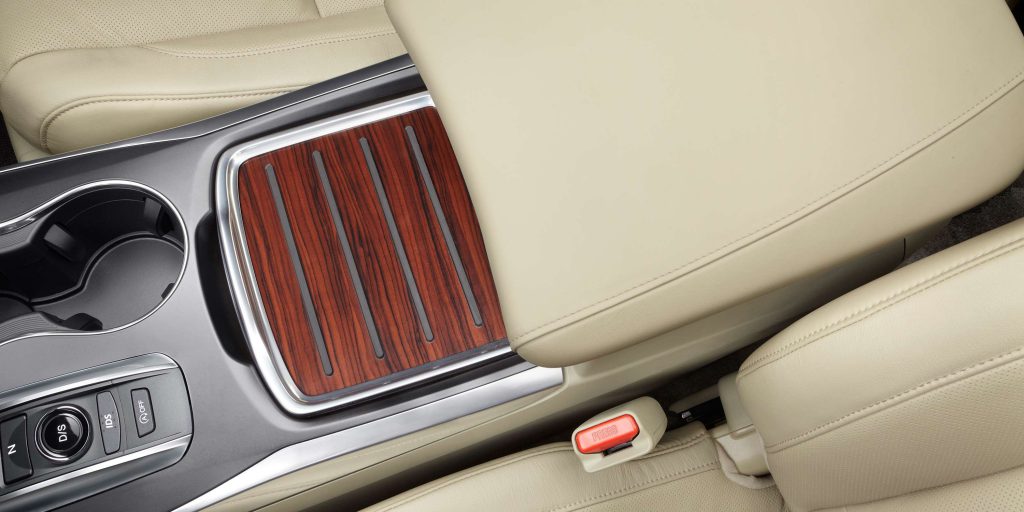Since its introduction in 1940 until now, an automatic transmission is increasingly asserting its position and importance in the automotive industry. Currently, most cars sold in the market are equipped with automatic transmissions. This is an important part of the powertrain. Today, modern cars are being preferred by customers because of many outstanding advantages, in which automatic transmission is considered the “gene code” that makes this breakthrough.
Experiencing a long development process, AT is increasingly developed with the introduction of new, more advanced, and modern automatic transmissions. Surely you are very familiar with the structure of 4-speed, 6-speed, or 7-speed automatic transmissions. But how about the 9-speed transmission? Do you know everything about this model? If not, let’s spend a little time with us to find out about the topic: “What Is A 9 Speed Automatic Transmission?”
Contents
9-Speed Automatic Transmission: What’s The Difference?

It can be seen that each type of transmission has its own characteristics and gives a different driving experience. However, the main goal of development is to increase fuel economy while ensuring the smoothest operation.
As a bridge linking the engine with the wheel, the transmission plays the role of the torque converter, and crankshaft rotation in accordance with the working conditions. Adding levels, and expanding the range of gear ratios means improving the car’s performance. In other words, it helps the engine work stably at optimum state in terms of fuel economy, power, or torque. The 9-speed transmission is considered the limit in the auto industry because exceeding this threshold increases complexity, and weight and cannot compensate for fuel efficiency.
“What does 9-speed automatic mean?” The 9-speed transmission consists of a front section with five forward speeds plus reverse and a rear section with a low range gear set and a high range gear set in a normal upshift sequence. The five front section gears are shifted with the rear section in the low range then the front gears are used with the high range section except for low which is used only in the low range thus you have nine progressive forward speeds.
It was designed for cars equipped with a transversely mounted engine. The increase in performance stems from the wider gear ratios and lightweight construction of the powertrain. Just like its 7-speed predecessor, the 9-speed automatic transmission adds two overdrive gears and a new clutch design that reduces the overall size of the transmission to accommodate current vehicles equipped with a six-speed AT.
9-speed delivers extremely short response times and shifts below a perceived threshold. That means double-shifting and direct-shifting multiple times happen that the driver or passenger doesn’t notice. The 9-speed transmission has a compact transmission structure: 4 single gear units and 6 shift elements producing 9 gears. The box case retains the structure of 2 halves of light magnesium alloy, the case is made of lightweight aluminum.
Supported by a combination of a range of high-tech features including stop/start technology and the next generation of Electronic Precision Shifting, which features intuitive sequence shifting. 9-speed automatic transmission offers the ultimate balance between fuel efficiency and performance.
>> Read more: The ABC of 4 Speed Automatic Transmission
How to Shift a 9-Speed Transmission

How to shift a 9-speed automatic transmission effectively? We will break this problem for you. According to experts, 9-speed gearbox to use optimally, you have to run at high speed.
Here are the specific shifting procedures as you would perform them with a 9-speed automatic transmission:
Step 1:
You start your engine with the transmission in neutral and bring the vehicle’s air pressure up to normal.
Step 2:
Check to be sure that the range control button is in a low range so that you’ll be sure to be in a low range when you startup.
Step 3:
Push in the clutch pedal and move the shift lever to the low gear position. If your car is equipped with an upshift clutch brake you should push the clutch pedal all the way to the floor before putting the lever into low gear.
Step 4:
The clutch brake will stop the rotation of the gearing so that the clutch teeth won’t clash when being engaged with the gear. If your car does not have an upshift clutch brake, simply depress the clutch pedal and wait for several seconds to allow the gears to stop rotating by themselves now
Step 5:
Now release the clutch pedal and start moving in low gear accelerate until you have enough speed to shift to first.
Step 6:
Then double-clutch through the first gear and here’s how you double clutch:
- Start your shift by pushing the clutch pedal and releasing the accelerator as you move the shift lever to neutral. Once the lever is in neutral, let out the clutch.
- Once you have synchronized the gear speeds again, push in the clutch and complete the shift.
- Double-clutch all upshifts and downshifts, now continue upshifting second, third and fourth in the low range.
- As you reach full governed rpm in fourth gear, check your speedometer and remember the speed. It will help you when you downshift later. Also while you’re still in fourth gear, prepare for the shift to fifth by moving the range control button to high range.
- When you’re ready to shift to fifth gear, simply double clutch and move the lever to that position which is the same as first in the low range. As the shift lever moves through neutral the transmission, shifts from low to high range. You continue to upshift through the high range pattern until you reach the desired driving speed.
What about downshifting when traffic terrain or other conditions require a slower speed. Here’s a tip for you:
- As your car slows the engine, rpm drops down to the point where you can shift into seventh gear. Double-clutching on downshifts requires that you synchronize the gears by revving the engine with the clutch pedal up and the shift lever in neutral.
- After the double-clutch shift down to seven and then down through the remaining gears in the high range, double-clutching shift while still in fifth gear prepare for the shift to fourth by moving the range control button to low range Which will pre-select the low range.
- Do not attempt to downshift to the low range until your car is at the fourth gear cruising speed you noted while upshifting. Shifting the low range to a higher road speed will damage the synchronizer assembly.
- As you dip through neutral to the fourth gear position, the transmission will automatically shift from high to low range and then continue to downshift through the low range.
>> Related post: How to Fix When Automatic Transmission Won’t Shift into 3rd Gear
The Verdict: What Is A 9 Speed Automatic Transmission?
In a test, the 9-speed automatic transmission gave an impressive result of reducing fuel consumption by 6.5%. At the same time, the gearbox helps to increase the smooth operation and performance of the engine. We believe that when your car is equipped with this utility, it will give the driver interesting experiences.
Hopefully, through the article, you can learn some operating tips which will help you save fuel, reduce downtime and make driving a lot easier when using a 9 speed automatic transmission.



